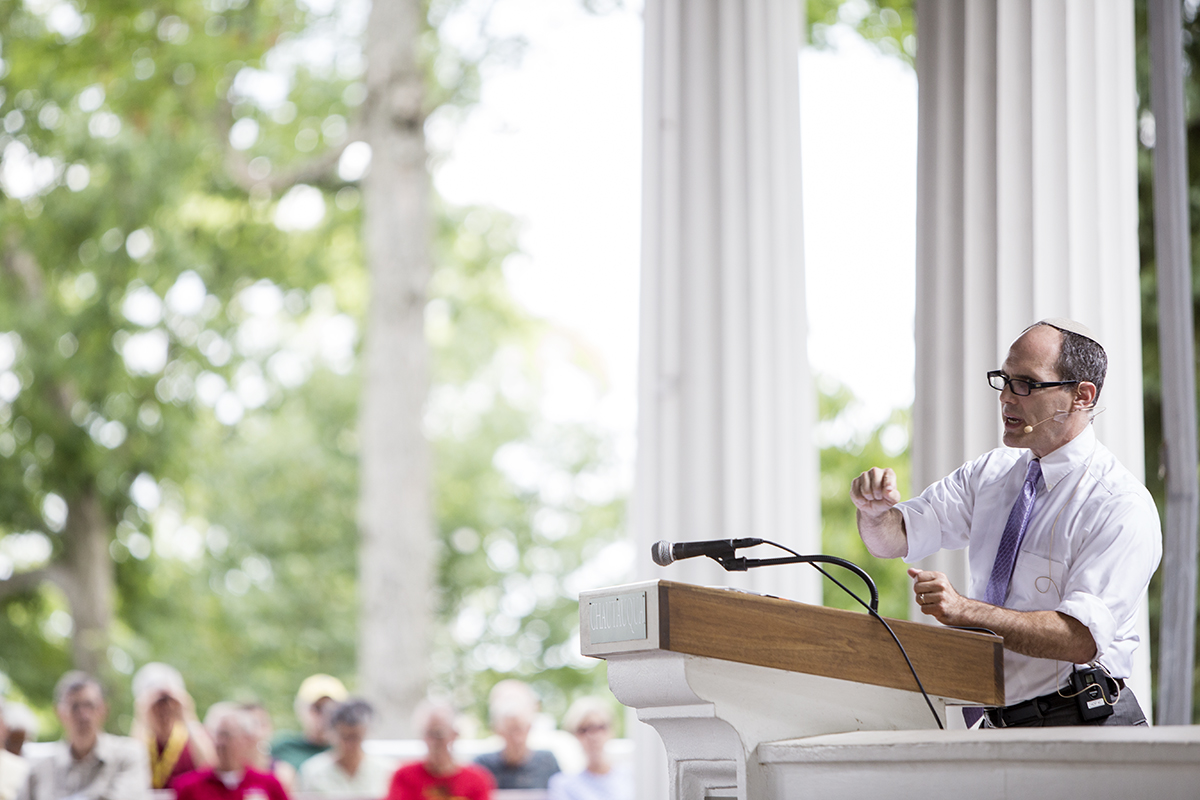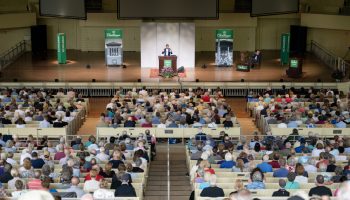Traditionally, cantors were central figures in Jewish synagogues who led Jewish prayers and memorized chants line by line so that their congregations wouldn’t have to. It was a good career with a lot of requirements: a wife, piousness, respect and an impressive set of vocal chords. But it didn’t exactly earn one fans or celebration.
That all changed when cantors such as Josef Rosenblatt started amassing massive audiences with their powerful singing — audiences that weren’t exclusively Jewish.
“An entire generation and their descendants at one time looked to their cantors as a pathway toward acceptance in the new world as well as a touchstone to the old,” said Michael Weis, himself a cantor at Brotherhood Synagogue in New York City.
In his Interfaith Lecture Thursday in the Hall of Philosophy, Weis detailed the early cultural transition that occurred in the national Jewish community as cantor “superstars” started attracting big crowds, making lots of money and recording synagogue music.
Weis argued these superstar cantors gave a new generation of American Jews a popular means to connect with their hereditary culture while pushing it forward.
“In a relatively short time, the congregations of tens and hundreds that characterized the appearances of cantors in Eastern Europe became, both through the influence of mass immigration and recording technology, fans of thousands and millions in the new world,” he said.
The lecture was a short trip through this period of cantor history, hitting all the highlights. It all started with Rosenblatt, Weis said, who started attracting European crowds before taking his unbelievable vocal range to America. Rosenblatt ended up singing and appearing in early talkie films.
Weis played recordings of each cantor through the Hall of Philosophy’s speaker system. When he asked the audience how many had once owned a phonograph, much of the crowd raised hands. These pieces of music technology history weaved through the lecture. The vinyl LP gave Richard Tucker a path to stardom with Jewish song and opera music. When recorded music became a common household installation, women were finally given an audience to join in the Jewish songs.
“What these new technologies created, for the first time in history, was the opportunity for a woman to step into this role,” Weis said. “But it wasn’t that women were suddenly allowed to start leading prayer. But the technology pulled the music out of the synagogue, and once the music was out of the synagogue it was fair game.”
Traditional Jewish music has a long and complex history, and the changing roles of cantors is somewhere near its center.
“Cantors served their own personal interests through these recordings, but also served a much greater national interest among the Jewish people and became multidimensional symbols,” he said. “In doing so, they left us a permanent legacy of their work to enjoy for many generations to come.”






